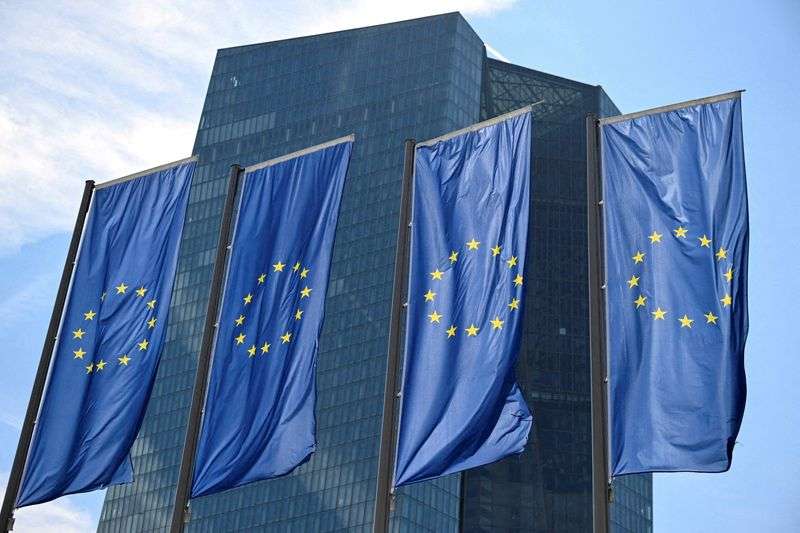European Central Bank (ECB) officials are considering the possibility of lowering interest rates to stimulate economic activity amidst a rapidly deteriorating eurozone economy and inflation trends below target. While achieving a ‘neutral’ rate has been the focus, debates suggest deeper cuts may be needed. Some policymakers argue that the current high rates are stifling demand and delaying recovery. However, reaching a consensus on these policy changes may take time as uncertainties surrounding the neutral rate persist.
by Balazs Koranyi
(Reuters) – Discussions among European Central Bank (ECB) officials are underway regarding the potential for interest rate reductions aimed at stimulating economic growth. Insights from several sources indicate that this topic has come to the forefront in recent talks.
Despite earlier rate cuts, policymakers maintain that their primary goal is to reach a so-called ‘neutral’ interest rate, which is intended neither to restrict nor to spur economic activity, all in an effort to stabilize inflation.
These discussions represent a significant shift in the ECB’s monetary policy conversations, potentially leading to faster and more substantial rate cuts than previously anticipated. However, a consensus on this matter has yet to be established, according to reports.
This shift comes at a time when the eurozone’s economic outlook is weakening rapidly, with inflation currently falling below expectations. There are increasing concerns that inflation could remain under the ECB’s 2% target, echoing a similar trend that persisted for nearly a decade before the COVID-19 pandemic.
Consequently, a growing number of ECB officials argue that the central bank has not moved quickly enough to ease monetary policy and that more significant rate cuts might be necessary to prevent inflation from declining excessively.
They also suggest that the ECB should reconsider its approach, moving towards a ‘meeting-by-meeting’ strategy rather than relying on the current references to restrictive rates, indicating that it is taking potential risks seriously.
“I believe that reaching the neutral rate is insufficient,” said an insider familiar with ongoing discussions. “Although a decision won’t be made immediately, the economy has been stagnant for two years without signs of recovery.”
Gediminas Simkus, who heads Lithuania’s central bank and serves on the ECB’s governing council, noted this week, “If disinflation takes hold, rates may need to go below the neutral rate, which has happened historically.”
Meanwhile, an ECB spokesperson refrained from commenting on these discussions.
UNCERTAINTY
A key area of uncertainty in the debate is that the neutral rate remains unobservable, leading to varying definitions among experts. “If you asked me today, ‘Where is it?’ my honest response would be: ‘I don’t know,'” stated ECB President Christine Lagarde this week.
Nonetheless, estimates vary: the International Monetary Fund (IMF) suggests the neutral rate is around 2.5%, while ECB observers estimate it at approximately 2.25%. ECB staff believe it may be close to or just over 2%, and market indicators imply it could be beneath 2%.
The primary rationale for advocating a rate decrease below the neutral level is the observed weakness in economic growth and the apparent stall in recovery. This situation suggests that the ECB’s high rates may be restricting economic activity more than anticipated, ultimately suppressing demand.
Earlier this week, Banque de France Governor François Villeroy de Galhau described the European economy as undergoing a soft landing, noting that while a recession is avoided, a robust recovery remains elusive. He warned that the risk of consistently missing the inflation target from below is as significant as exceeding it.
No sources indicated support for cuts deeper than the ECB’s existing incremental approach of 25 basis points. They predict that any decision to lower rates below the neutral level is still several months away, and the economic landscape may shift before then.
(Written by Balazs Koranyi; French version by Bertrand De Meyer, edited by Blandine Hénault)
Copyright © 2024 Thomson Reuters
